Essential Guide to Your Camper Van Build
Thinking about starting your very own camper van build? You’re in the right place.
Whether you’re a weekend explorer or dreaming of full-time van life, this guide will walk you through the essentials of a DIY camper van build from choosing your base vehicle to installing power, insulation, and smart storage.
We’ve packed in real-world tips, beginner-friendly advice, and creative design ideas to help you turn a simple van into a cozy, functional home on wheels—without blowing your budget.
Let’s get started!
Key Takeaways
A successful camper van build starts with choosing the right base vehicle for your needs and budget.
Smart layout planning and storage solutions make a big difference in comfort and usability.
Proper insulation, ventilation, and a reliable power setup are essential for year-round travel.
A well-designed plumbing system makes van life cleaner and more convenient.
Thoughtful upgrades like lighting, heating, and cooking setups can turn your van into a true home on wheels.
Don’t forget exterior accessories like roof racks or solar panels—they can add both style and function.
Choosing the Right Base Vehicle for Your Camper Van Build
Every great camper van build starts with a solid base. The van you choose will shape everything from layout to fuel costs and what kind of gear you can bring along.
Think About Your Travel Style
Weekend escapes or full-time van life?
If you’re going off-grid for months, you’ll need more space and durability than someone doing short weekend trips.City stealth or wild camping?
Smaller vans are easier to park and more stealthy in urban areas, while larger models offer more interior space for full conversions.
🚐 Popular Van Models to Consider
| Van Model | Pros | Considerations |
|---|---|---|
| Ford Transit | Widely available, tall roof options | Can be pricey new |
| Mercedes Sprinter | Durable, great for high-end builds | Costly maintenance |
| Ram Promaster | Boxy shape = easy to build in | Lower ground clearance |
| Nissan NV200 | Compact, affordable | Limited headroom & space |
| VW Transporter | Iconic look, good used market | Pricier for the size |
Don’t Skip the Van History Check
Always check the van’s history, look for signs of rust, past accidents, or water damage. And think ahead: a bigger van might feel more comfortable, but it’ll also cost more to run.
Planning Your Layout and Design
Once you’ve got your van, it’s time to design the space you’ll be living, cooking, and sleeping in. A smart layout can make a small van feel roomy, functional, and inviting.
Start with Your Priorities
Are you traveling solo or with a partner (or pets)? Do you need a full kitchen? A bathroom? A work desk? Sketch your camper van layout around your lifestyle, not someone else’s Instagram reel.
Layout Styles to Consider
| Layout Style | Best For |
|---|---|
| Front-to-Back | Full builds with clear “rooms” |
| Side-to-Side | Compact vans maximize walking space |
| Convertible Zone | Multi-use setups (bed turns into seating) |
| Garage Build | Travelers with bikes or outdoor gear |
Function + Style = Van Life Win
Use lightweight materials, neutral colors, and smart furniture like foldable tables or swivel seats. These keep things open, bright, and flexible.
Pro Tip:
Use painter’s tape to map out your layout on the van floor before building. It’s a simple way to spot any awkward movement flow or wasted space before you make cuts.
Expert Tip:
Interior designer and van lifer, Grace Castaneda, recommends creating your camper van layout on paper first to ensure you find the best use of space. “Sketch a rough layout of your van, and then cut out pieces of paper to represent the furniture and fixtures you plan to use,” she suggests. “This allows you to move things around and try different designs before committing to anything.”
Insulation and Ventilation
Comfort inside your van isn’t just about cushions and fairy lights—it starts with the insulation. Without it, you’ll roast in summer, freeze in winter, and deal with nasty condensation year-round.
Choosing the Right Insulation for Your Camper Van Build
There’s no one-size-fits-all, but here’s a quick breakdown:
| Insulation Type | Pros | Watch Out For |
|---|---|---|
| Foam Board | Affordable, decent R-value, easy to cut | Can leave small gaps if not sealed properly |
| Spray Foam | Excellent seal and insulation | Hard to remove or repair |
| Reflectix | Easy to install, cheap | Useless unless paired with an air gap |
| Sheep Wool | Natural, moisture-resistant | Pricier, not always easy to source |
💡 Tip: Seal all gaps and exposed metal first with sound deadener or anti-condensation paint before insulating. It’ll make a real difference.
Let That Van Breathe – Ventilation is Non-Negotiable
Moisture from breathing, cooking, and even just existing can cause mold or damage. That’s why proper ventilation is a must.
Here are your main options:
Roof Fan (e.g., MaxxAir or Dometic) – powerful airflow, perfect for warm weather and cooking
Pop-out Windows or Sliding Vents – help with cross-breeze, especially in smaller builds
Passive Vents – work without power, but need to be placed strategically
🎯 Installing at least one powered roof fan (with a rain shield) is one of the best decisions you’ll make for year-round van life.
One of the most popular (and most trusted) roof fans for a camper van build is the MaxxAir 00-05100K MaxxFan Vent Fan on Amazon. It’s quiet, easy to install, and comes with a built-in rain cover—meaning you can leave it running even when the weather turns.
Another solid option is the Dometic Fantastic Vent Fan, which gets rave reviews for airflow and durability.
Electrical System and Power Supply
Whether you’re charging your phone, brewing coffee, or running a fridge, your camper van build needs a reliable electrical system to power your life on the road.
Know Your Setup: The Basic Components
Here’s what makes up a solid off-grid power system:
| Component | Purpose |
|---|---|
| Solar Panels | Harvest energy from the sun |
| Leisure Batteries | Store power for use day and night |
| Charge Controller | Manages the flow between panels and the battery |
| Inverter | Converts DC (battery) to AC (plug-style) power |
| Shore Power Hookup | Optional—plug into mains when parked |
| Fuses & Breakers | Safety must-haves to prevent overloads or fires |
Not every van needs all of the above, but even a basic solar setup can give you freedom from campsites and hook-ups.
The Power of the Sun: Solar Panels
Solar is the go-to option for most van lifers. You’ll find rigid, flexible, and portable panels. A great starter kit is the:
Renogy 200W Solar Starter Kit includes panels, a charge controller, and cabling—ideal for medium-use setups like lights, fans, and a fridge.
Recommended Gear: Batteries & Inverters for Your Van Build
If you’re not sure which components to trust, here are some proven picks that work great in van life setups:
Product Type Best For Link Renogy 100Ah LiFePO4 Battery Lithium Lightweight, long-lasting View on Amazon Jackery Explorer 300+ All-in-one Power Station Plug-and-play van setups View on Amazon Renogy 1000W Pure Sine Wave Inverter Inverter Running AC appliances safely View on Amazon These products strike a good balance between quality, price, and ease of use, especially if this is your first camper van build.
Planning Tip
Estimate your power needs before you buy. Use a free online calculator or spreadsheet to total your daily watt-hour usage from lights, fans, laptops, etc. Then size your system accordingly.
Plumbing and Water System.
Running water in your van might sound fancy, but it doesn’t have to be complicated. Whether you’re building a full sink setup or just want something simple that works, there’s a solution for you.
Simple, Portable, and No-Fuss
Not ready to plumb a whole system? No problem. The
SereneLife Portable Camping Sink
gives you everything you need in one compact unit:
Foot-pump operated (no electricity needed)
Integrated soap dispenser & towel holder
Large 19L capacity with wheels for easy refills
Ideal for weekend trips, stealth setups, or off-grid builds
🛒 Plug-and-play, affordable, and super practical—just park it inside your van or set it up outdoors when you arrive.
Heating and Cooling Options
Camper van life can take you anywhere, from icy mountain passes to sweltering desert highways. Having a solid plan for heating and cooling isn’t just about comfort—it’s about survival on extreme days.
Heating Options
Diesel Heaters – Super popular for full-time vanlifers. Efficient, powerful, and often come with thermostats.
Example:LF Bros 110V/12/24V 5KW Diesel Heater
– reliable and easy to install.
Propane Heaters – Great for off-grid setups. Just remember to ventilate!
Example: Mr. Heater Portable Buddy – a classic choice.
Cooling Options
Roof Fans – These keep air moving and help push out hot air.
Example: Maxxair 00-06200K Roof Fan – quiet, reliable, and reversible airflow.Portable Air Conditioners – Work best when you’re hooked up to shore power or have a hefty battery system.
Example: HOMCOM Air Conditioning Unit– compact and powerful (but not cheap!)
Don’t Forget Insulation
Insulation isn’t just for winter—it helps keep heat out in summer too. Pair good insulation with reflective window covers and ventilation, and you’ll notice a huge difference.
Smart Storage Solutions
One of the biggest challenges in any van build? Fitting your life into a box on wheels. Smart storage is what turns chaos into comfort. With the right gear and layout, you can maintain organization without compromising living space.
Built-In Storage Options
Overhead Cabinets – Great for clothes, books, or pantry items
Under-Bed Drawers – Hideaway storage that’s easy to access
Bench Seats with Storage – Dual-purpose design that saves space
Add-On Storage You Can Buy Today
Even if you’re not a pro builder, these off-the-shelf options can make a big difference:
| Item | Use | Link |
|---|---|---|
| Foldable Fabric Storage Bins | Tidy up shelves or cubbies | View on Amazon |
| Over-the-Door Organiser | Store toiletries, snacks, or cables | View on Amazon |
| Collapsible Crates | Stackable, sturdy, and easy to move | View on Amazon |
Van Life Tip:
Use vertical space. Add hooks, bungee nets, or magnetic racks to bare walls or the ceiling. Every inch counts!
Kitchen and Cooking Setup
Cooking on the road doesn’t have to mean cold beans and instant noodles. With a well-planned kitchen, you can prepare proper meals even in the most remote locations.
🔧 Layout Options
Galley Style – Runs along one side of the van; great for narrow builds
L-Shape – Makes good use of corners and feels more like a home kitchen
Slide-Out Kitchens – Tuck away when not in use; perfect for compact vans
Cooking Gear You Can Count On
| Product | Use | Link |
|---|---|---|
| 2-Burner Propane Stove | Cook outside or inside with ventilation | View on Amazon |
| Collapsible Cookware Set | Saves space in drawers or shelves | View on Amazon |
| 12V Mini Fridge | Keeps food fresh off-grid | View on Amazon |
Van Life Tips
Use a fold-out counter to expand prep space without hogging your layout
Hang magnetic spice racks or utensil bars on the walls
Install a sink with a hand-pump faucet to stay self-contained and off-grid
Whether you’re cooking pasta in the Alps or grilling burgers by the beach, a smart kitchen setup makes van life tastier and easier.
Sleeping and Seating Arrangements
When you’re living the van life, where you rest your head (and backside) matters more than you might think. A solid setup turns your van into a cozy little home—even when you’re parked in the middle of nowhere.
Bed Options That Work
Fixed Beds – No daily setup; perfect if you’ve got space to spare
Convertible Beds – Transforms into a sofa or table setup by day
Slide-Out or Murphy Beds – Tucks away to maximize floor space
| Bed Option | Pros | Cons |
|---|---|---|
| Fixed Platform | Always ready, great for under-bed storage | Takes up space full-time |
| Sofa Bed | Multi-use space, comfy lounge mode | It can be fiddly to convert |
| Slide-Out | Hidden when not in use | More complex build/install |
Smart Seating Ideas
Swivel Front Seats – Turn your cab into your lounge with a flick of a lever
Storage Benches – Dual-use seating that hides gear or kitchen bits
Folding Camp Chairs – Lightweight, portable, and perfect for outside use
Pro Tip: Swivel seats add big value to small vans. Just double-check compatibility with your make and model.
Lighting and Electrical Accessories
Lighting in a camper van does more than just help you see. It sets the mood, keeps things safe, and makes your van feel like a proper home, not a dark tin box on wheels.
💡 Interior Lighting Options
Recessed LED Lights – Sleek, bright, and energy-efficient. Ideal for general use.
LED Strip Lights – Flexible and low-profile. Great for ambient lighting under cabinets or along ceiling edges.
Puck Lights – Surface-mounted and perfect for spotlighting small areas.
| Product | Best Use | Link |
|---|---|---|
| 12V Recessed LED Lights | General interior lighting | View on Amazon |
| USB LED Strip Lighting Kit | Mood lighting and under-shelf glow | View on Amazon |
| Battery-Operated Puck Lights | Easy installs in drawers or tight spots | View on Amazon |
⚡ Electrical Add-Ons That Matter
USB Charging Ports – Charge phones, tablets, & gear without draining your van’s power.
12V Sockets – Power fans, fridges, or even coffee makers.
Inverter (Pure Sine Wave) – Safely power sensitive electronics (laptops, medical devices) and essential 240V appliances in your van.
Dimmer Switches – Adjust lighting levels for night, work, or downtime.
🧠 Pro Tip: Install lighting in zones so you can have bright light in the kitchen and soft light near the bed without fuss.
Exterior Upgrades and Accessories.
The outside of your camper van does more than just protect what’s inside; it’s your storage system, workspace, and adventure base. With the right upgrades, you’ll get more function and a bit more flair on the road.
Roof Racks
Need extra storage for gear, boards, or solar panels? Roof racks are the go-to.
Modular Roof Racks – Add-ons like bike mounts or cargo boxes
Flat Utility Racks – Great for solar setups or decking platforms
| Product | Use | Link |
|---|---|---|
| MaxxHaul Roof Rack | General cargo & gear | View on Amazon |
🌞 Awnings
Create an instant outdoor living space. Stay shaded while you cook, chill, or wait out the rain.
Manual Roll-Out Awnings – Simple and budget-friendly
Retractable Awnings – Sleek and compact for smaller builds
| Product | Use | Link |
|---|---|---|
| Olpro Camper Van Awning | Extend your living space | View on Amazon |
Bike Mounts
Keep bikes outside and free up space inside. Some mount on the rear doors, others on the roof racks.
| Product | Use | Link |
|---|---|---|
| Fiamma Carry-Bike Rack | Rear door bike transport | View on Amazon |
Other Smart Upgrades
Solar Panels – Quiet, off-grid power
Backup Cameras – Essential for reversing a long van safely
Exterior LED Floodlights – Great for night-time setups or security
Van Hack: Always check your van’s weight limits and mounting points before loading the roof or attaching heavy accessories.
With these camper van customization ideas, you can create an exterior that’s both stylish and functional. Enhancing your van’s exterior will make your road trip experience even more enjoyable and memorable!

Conclusion
Building your own camper van isn’t just about saving money—it’s about freedom, creativity, and crafting a space that feels like home wherever you park it. Whether you’re planning a full DIY conversion or just upgrading one section at a time, this guide gives you the practical steps, tools, and tips to bring it all together.
From choosing the right base vehicle to planning your layout, installing systems, and customizing both the interior and exterior, you’ve got everything you need to kickstart (or finish) your dream build.
Your van, your rules. So take your time, plan wisely, and enjoy every mile of the journey.
Enjoy your camper van build and happy travels!
Want to do it on the cheap? Check out our popular post: Best Budget Camper Van Conversions Under $5,000 for real-life examples and affordable inspiration.
FAQ
What’s the best van to convert into a camper?
It depends on your needs. Ford Transit and Mercedes Sprinter are popular for space and reliability, while smaller vans like the Nissan NV200 suit tight budgets.
How long does a camper van build take?
A full DIY conversion can take anywhere from a few weeks to several months, depending on your time, budget, and skill level.
What’s the average cost of a camper van conversion?
Basic builds can be done under £5,000, while professional conversions can reach £30,000 or more. It all depends on your ambitions.
Is insulation really necessary?
Yes—good insulation keeps your van warm in winter, cool in summer, and helps with noise reduction too.
Can I live full-time in a camper van?
Absolutely. Many people do it long-term. Just make sure you plan for heating, storage, hygiene, and reliable internet if needed.
What’s the most important system to get right?
Electrical. If your power setup is solid, everything else becomes easier—lighting, appliances, even charging your phone.
Can I install a shower in my van?
Yes, but it takes space and planning. Some opt for portable outdoor showers or gym memberships instead.
What tools do I need to start a DIY build?
At minimum: a drill, jigsaw, screwdrivers, measuring tape, and safety gear. For electrical work, a multimeter is essential.
Leave a Reply
- Van Life Cost Calculator 2025: Estimate Your Monthly Van Life Budget
- Starlink for Van Life: Setup, Costs & Internet Guide (2025)
- 30 Van Life Gadgets Under $30 on Amazon (2025 Guide)
- Van Life with Disabilities: Accessible Campervan Living Tips
- 50 Must-Have Van Life Accessories on Amazon
- Best Vans for Van Life 2025 | Top Conversion Picks
- Top 7 Free Vanlife Campsites in the U.S. (2025 Guide)
- Top 5 Power Stations for Van Life in 2025
- 12 Gift Ideas for Van Life Lovers
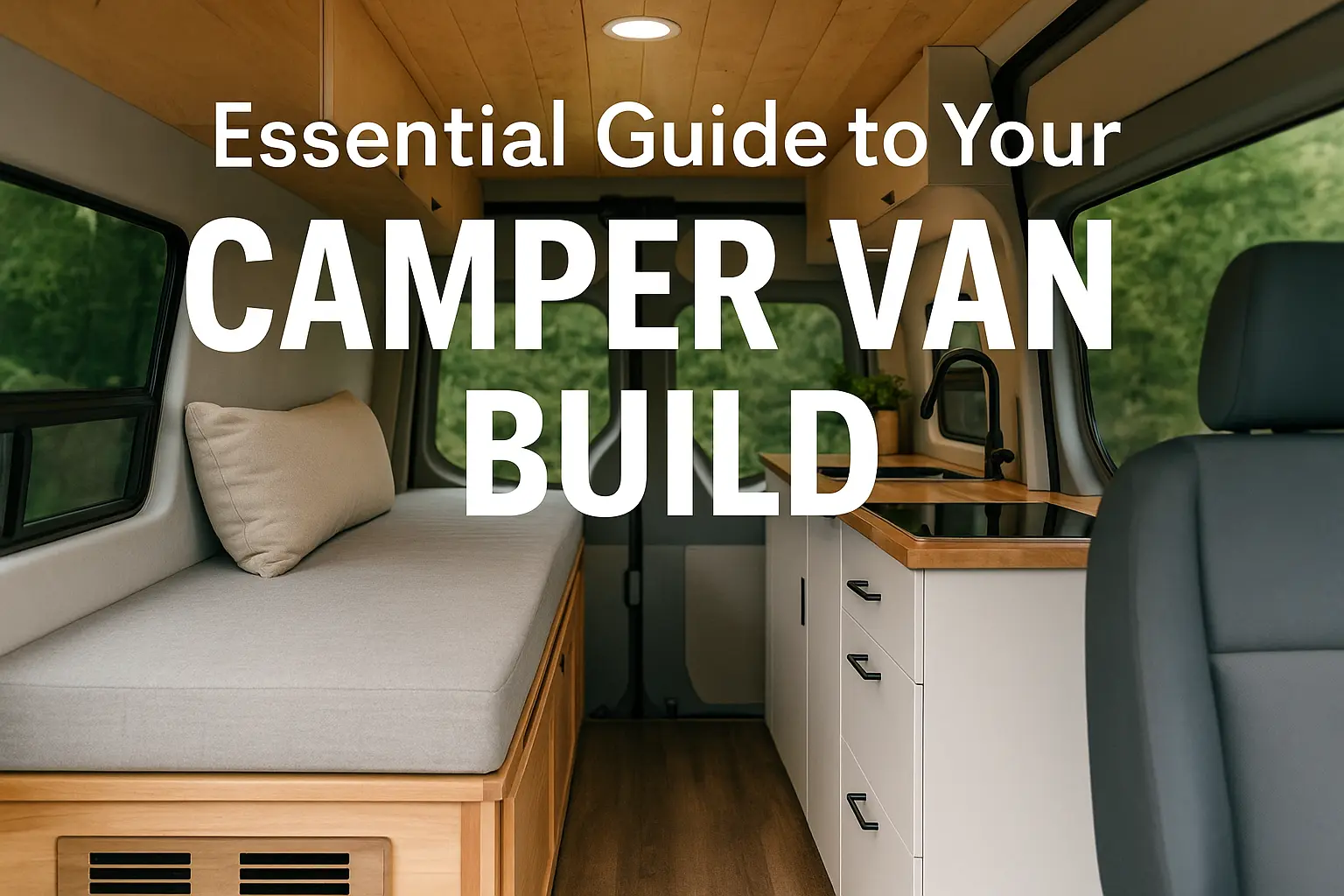



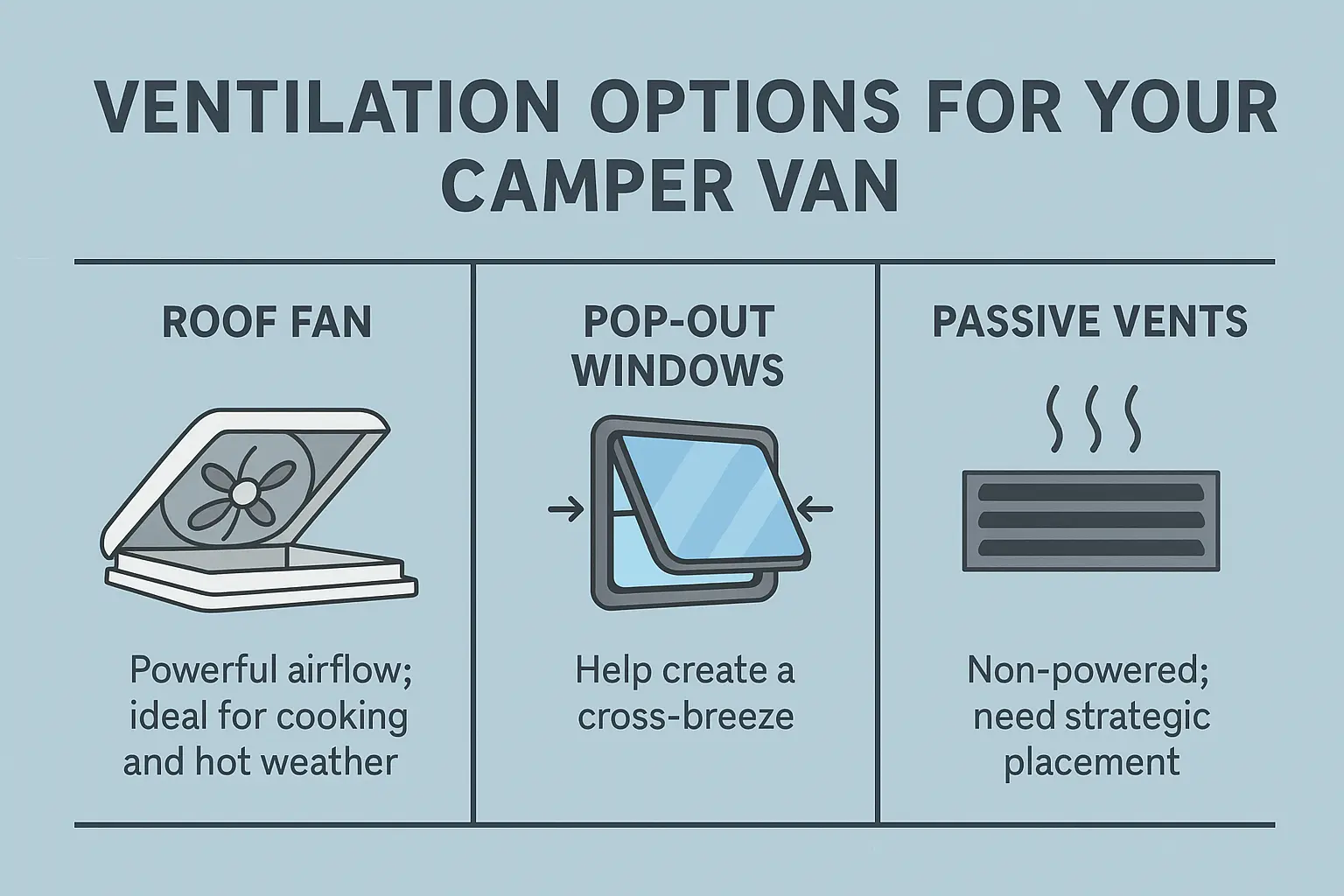

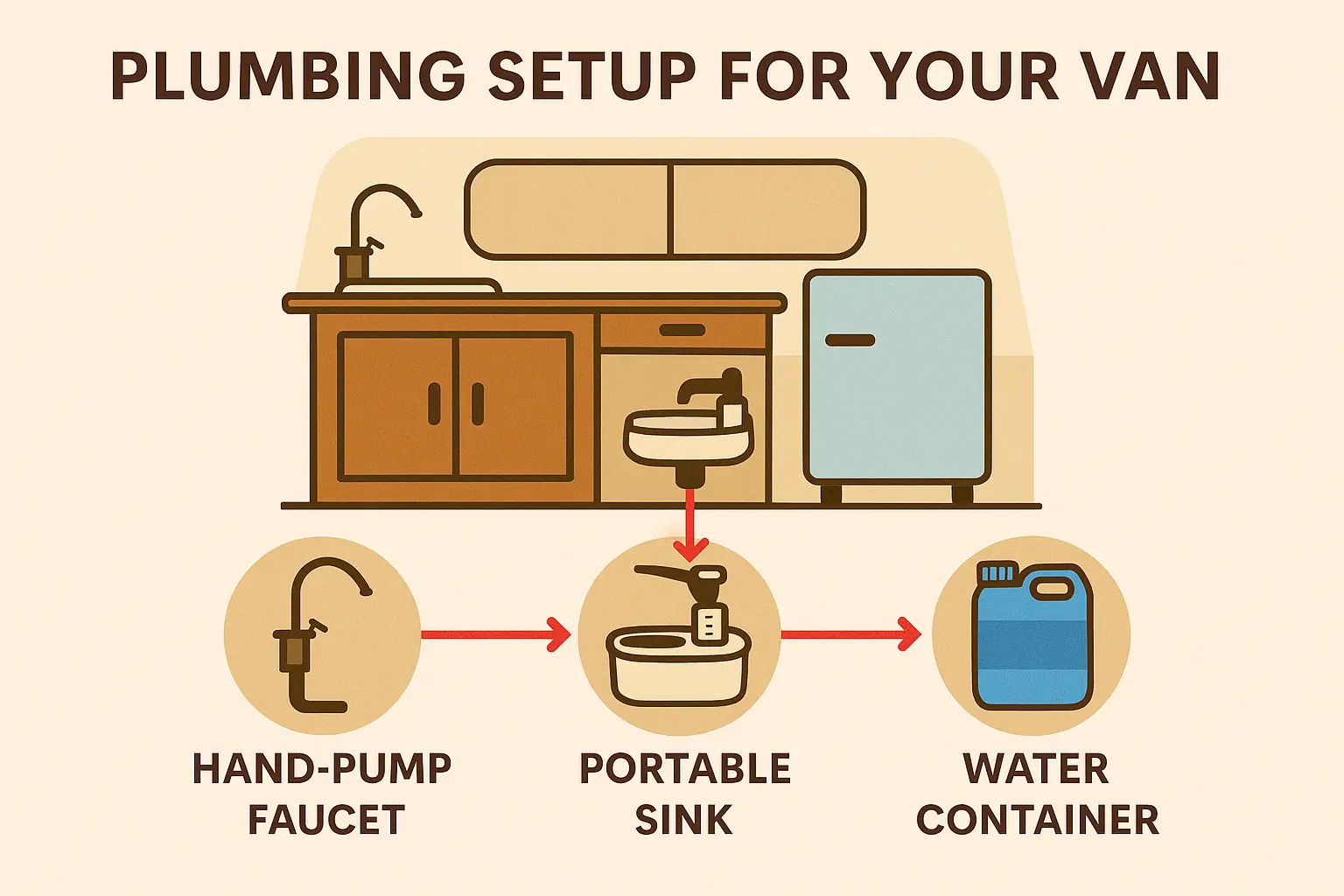


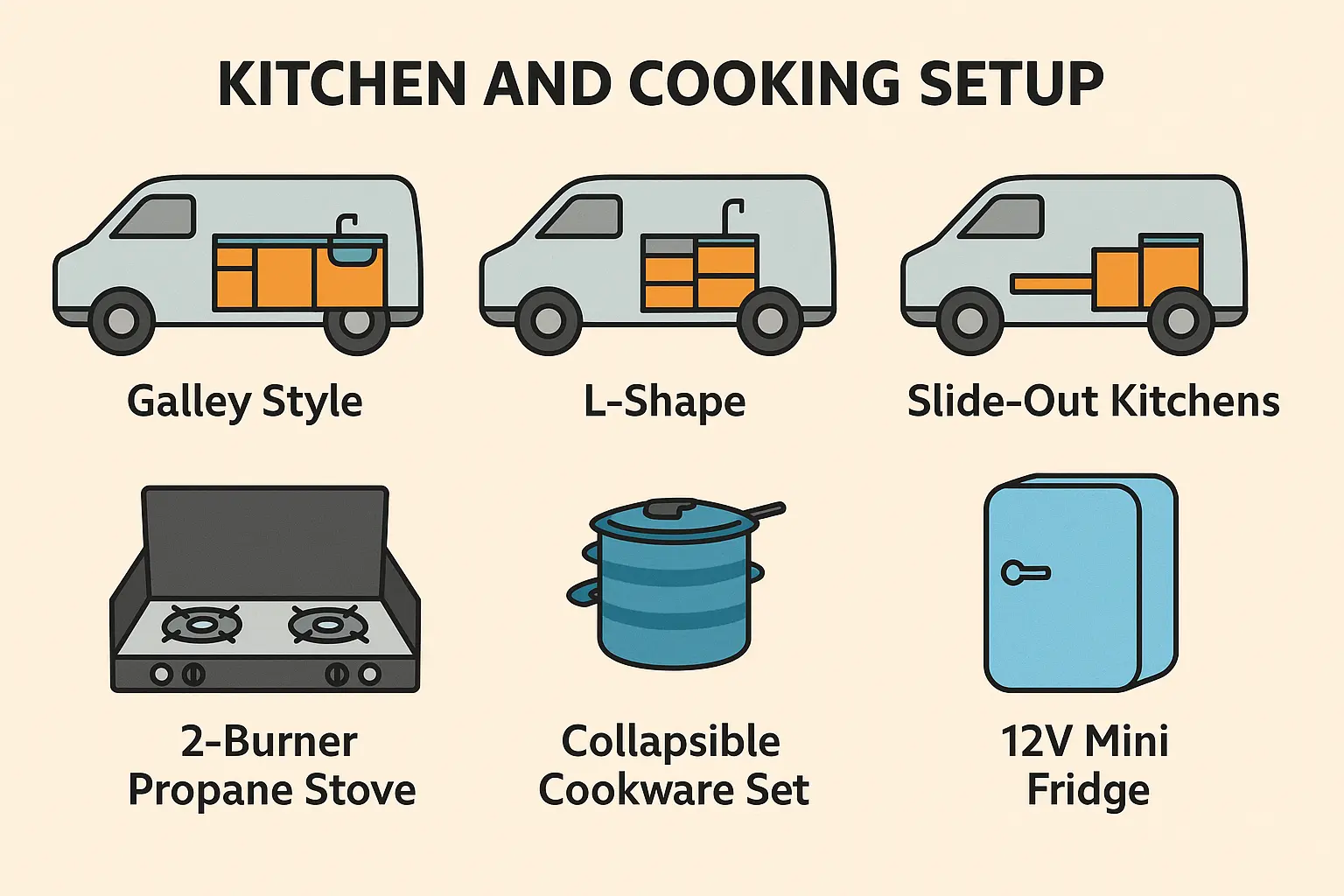

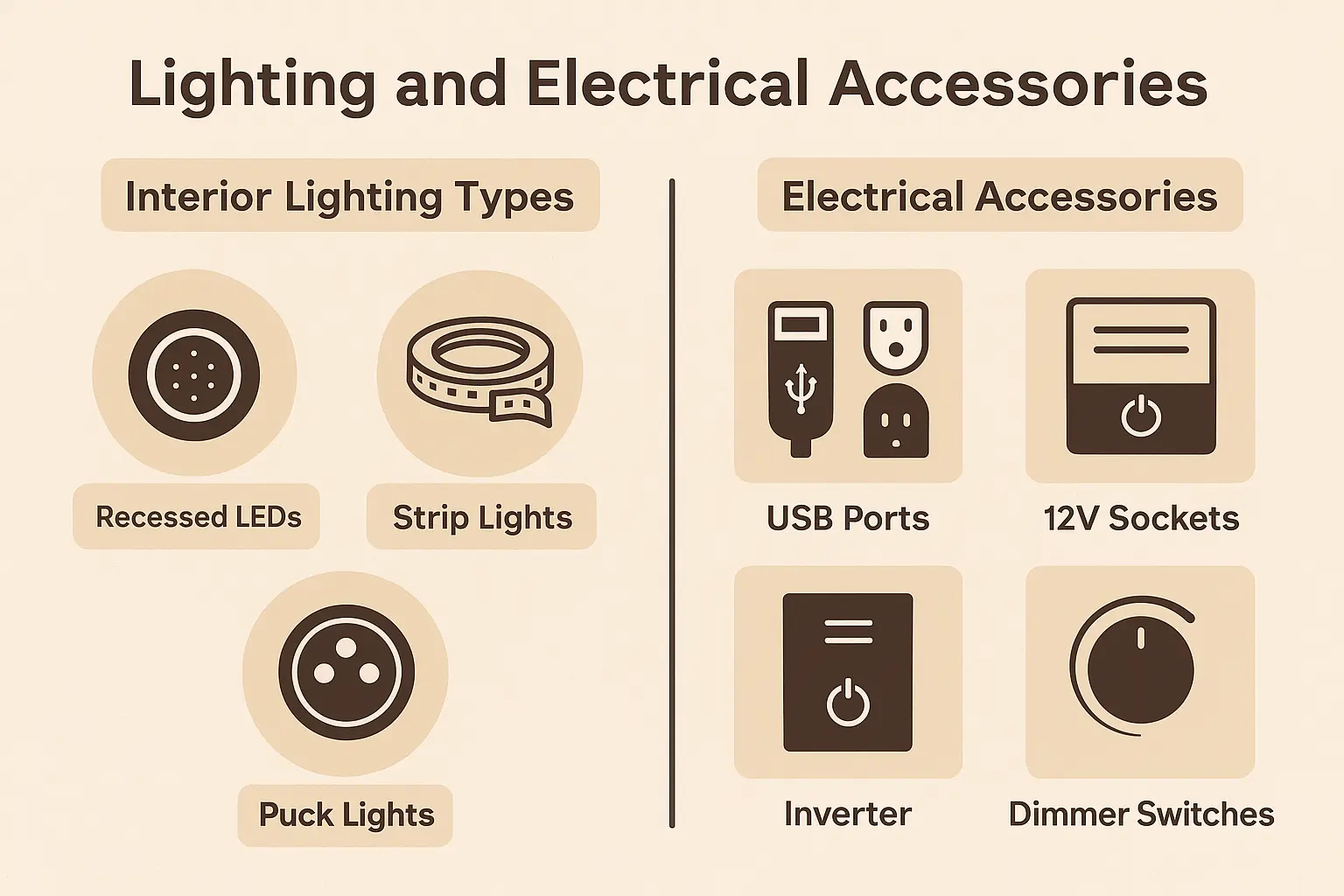
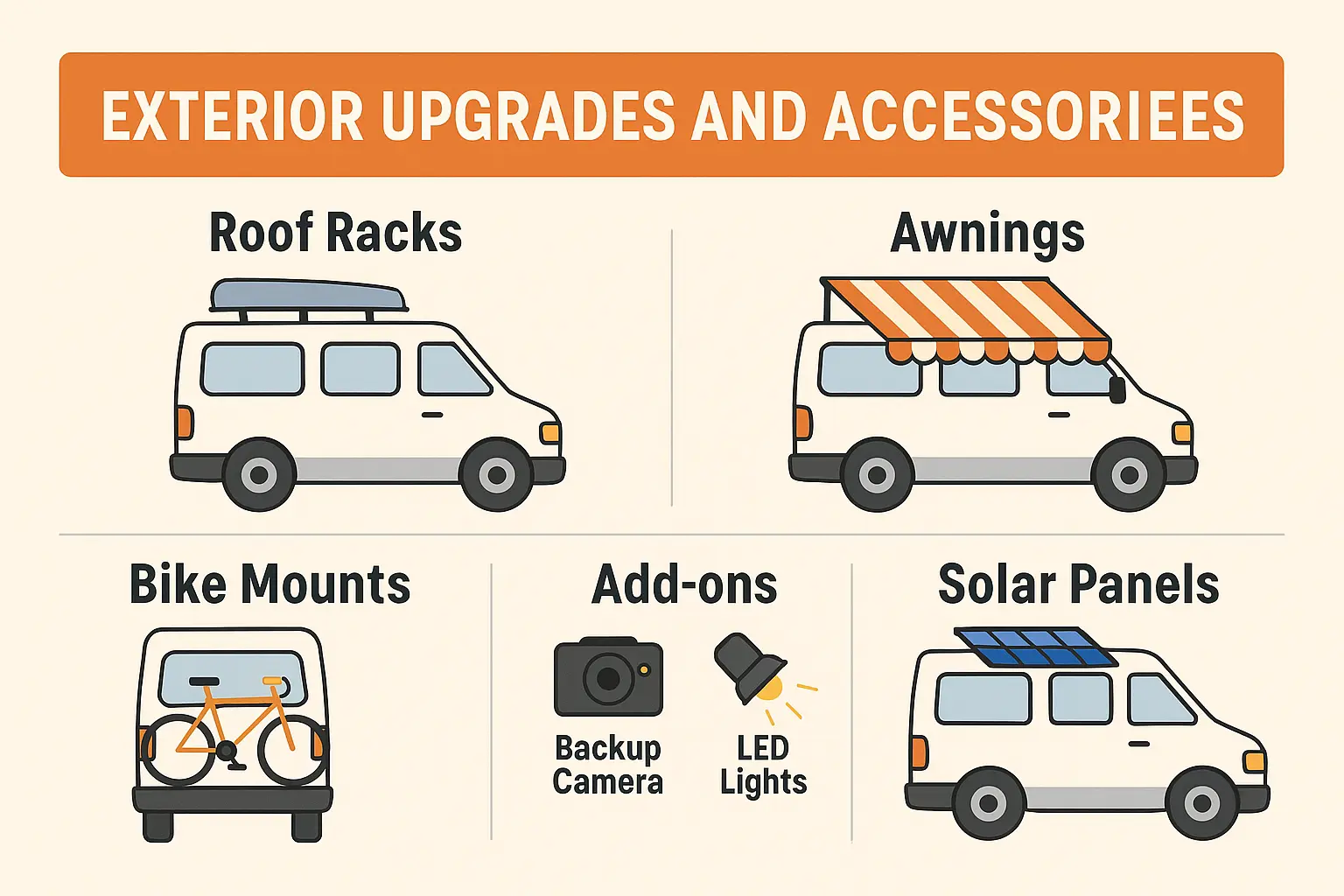
 >
>
2 Responses to Essential Guide to Your Camper Van Build